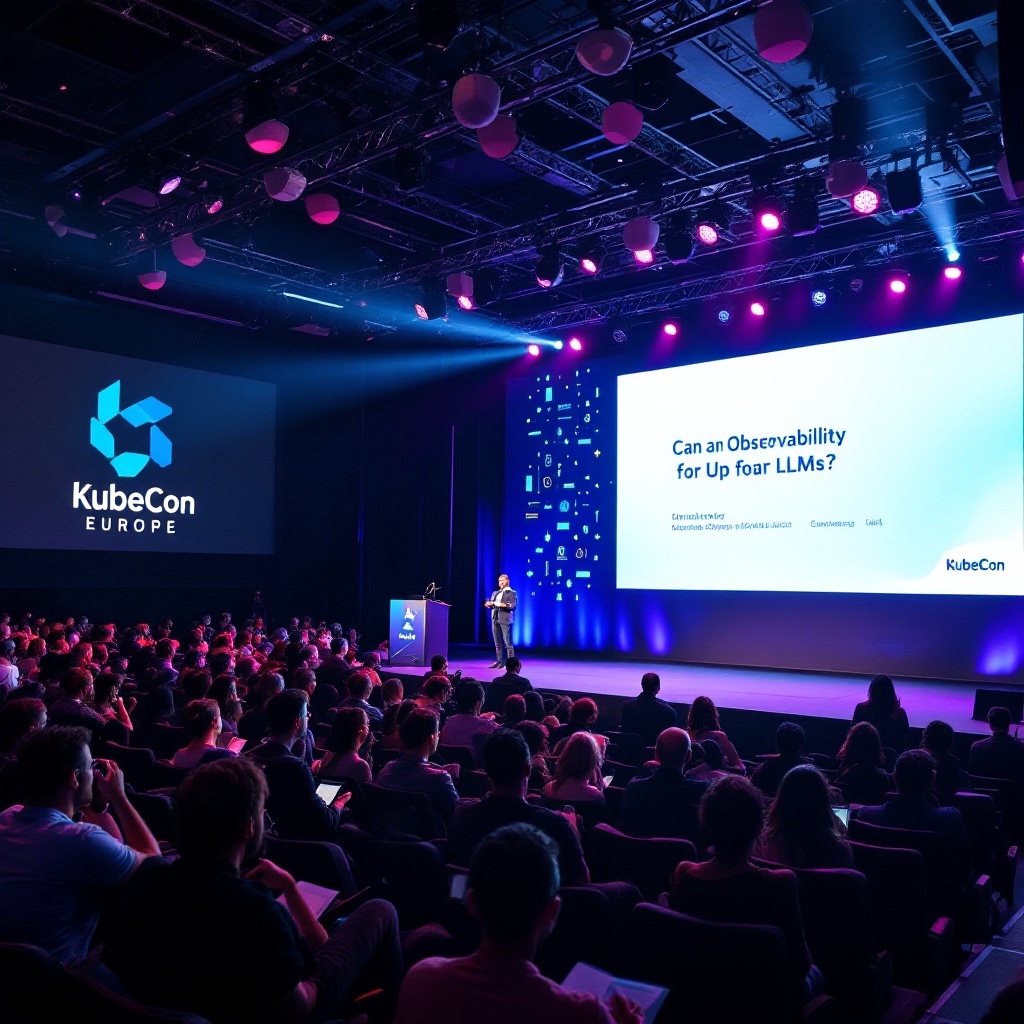KubeCon Europe has become a central hub for discussions surrounding Kubernetes and its rapid adoption across various industries. The first day of the conference featured a keynote that delved into a question that is increasingly relevant in today’s tech landscape: Can observability keep pace with the advancements of Large Language Models (LLMs)? As organizations continue to adopt Kubernetes for orchestrating containerized applications, the challenge of maintaining observability becomes more critical.
The keynote speaker opened by highlighting the exponential growth of Kubernetes adoption worldwide. As organizations embrace this powerful orchestration platform, they also need to ensure that they can monitor and understand the intricate interactions between their services. This is where observability comes in, providing the necessary tools to gain insights into the performance and reliability of applications.
The Growing Importance of Observability
Observability refers to the ability to measure the internal states of a system by examining its external outputs. It is crucial for diagnosing problems, understanding system behavior, and ensuring that applications are running smoothly. In the context of Kubernetes and microservices, observability becomes even more complex due to the distributed nature of these architectures.
With the integration of LLMs into applications, the landscape shifts dramatically. LLMs are capable of processing vast amounts of data and generating human-like text, but they also introduce new challenges in observability. As organizations deploy these models, they need to monitor not just the technical performance but also the ethical implications and biases that may arise from their use.
The Intersection of LLMs and Observability
As LLMs become more prevalent, the need for effective observability tools that can handle the complexity of these models increases. Traditional monitoring solutions may not suffice. Organizations must consider what metrics are essential for evaluating the performance of LLMs, such as latency, throughput, and error rates.
Moreover, understanding the decision-making process of LLMs is vital. Unlike traditional software, LLMs generate outputs based on patterns learned from data, making it challenging to pinpoint why a model made a specific decision. This opacity necessitates advanced observability solutions that can provide insights into the model’s reasoning and highlight potential biases in its outputs.
Challenges in Implementing Observability
Implementing observability in a Kubernetes environment, especially when LLMs are involved, poses several challenges. One significant hurdle is the sheer volume of data generated by these systems. Monitoring tools must be capable of processing and analyzing large datasets in real-time to provide actionable insights.
Additionally, the dynamic nature of Kubernetes means that services can scale up and down rapidly. Observability solutions need to adapt to these changes, ensuring that they capture relevant metrics without introducing significant overhead or latency to the applications being monitored.
The Role of Open Source in Observability
The keynote also touched on the role of open-source projects in enhancing observability. Many organizations are turning to open-source tools that can be customized to meet their specific needs. Tools like Prometheus for monitoring and Grafana for visualization have gained popularity for their flexibility and community support.
Open-source solutions also foster collaboration among developers and data scientists, enabling them to share best practices and improve observability frameworks. As the demand for effective observability grows, so does the community’s commitment to developing robust tools that can handle the complexities introduced by LLMs.
Future Directions for Observability
Looking ahead, the keynote speaker emphasized the importance of evolving observability practices to keep pace with technological advancements. As LLMs continue to evolve, observability frameworks must also adapt. This includes implementing machine learning techniques to enhance monitoring capabilities and developing more intuitive dashboards that provide clear insights into system performance.
Moreover, organizations need to prioritize transparency in their observability efforts. This involves not only tracking performance metrics but also ensuring that stakeholders understand the decisions made by LLMs. Adopting explainable AI practices can help bridge this gap, providing clarity on how models operate and the factors influencing their outputs.
Conclusion
The opening day of KubeCon Europe set the stage for a crucial dialogue about the intersection of observability and LLMs. As Kubernetes continues to gain traction, the need for robust observability solutions becomes ever more pressing. Organizations must invest in tools and practices that not only monitor performance but also address the complexities introduced by advanced AI models.
In conclusion, the journey towards effective observability in the era of LLMs is just beginning. By embracing open-source tools, fostering collaboration, and prioritizing transparency, organizations can ensure that they can keep up with the rapid advancements in technology while maintaining the integrity and reliability of their applications.
